 Introduction to Exponential Functions (Part 2)
Introduction to Exponential Functions (Part 2)
(This page is Part 2. Click here for Part 1.)
Properties that All Exponential Functions Share
Let $\,f(x)=b^x\,,$ where $\,b\,$ is a positive number not equal to $\,1\,.$
For all (allowable) bases $\,b\,,$ exponential functions share the following properties:
- The domain is the set of all real numbers: $\,\text{dom}(f)=\mathbb{R}\,$
- The range is the set of all positive real numbers: $\,\text{ran}(f)=(0,\infty)\,$
- The graph crosses the $y$-axis at $\,y = 1$
- The graph passes both the vertical and horizontal line tests
The Domain is the Set of All Real Numbers: $\text{dom}(f) = \mathbb{R}$
If the graph of an exponential function is ‘collapsed’ into the $x$-axis, sending each point on the graph to its $x$-value, then the entire $x$-axis will be hit.
Exponential functions know how to act on all real number inputs.
For basic information on the domain and range of a function, you may want to review: Domain and Range of a Function
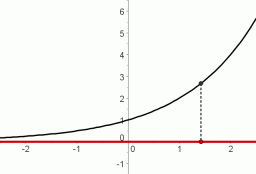
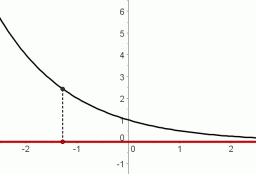
The Range is the Set of All Positive Real Numbers: $\text{ran}(f)=(0,\infty )$
If the graph of an exponential function is ‘collapsed’ into the $y$-axis, sending each point on the graph to its $y$-value, then all positive $y$-values will be hit.
Outputs from exponential functions are always positive.
Having trouble understanding the expression ‘$\,(0,\infty)\,$’ ? Then, you may want to review Interval and List Notation.
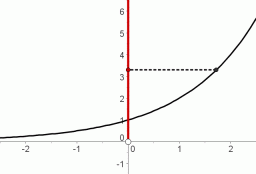
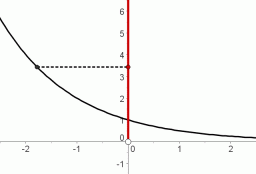
The Graph Crosses the $y$-Axis at $\,y=1\,$
For allowable values of $\,b\,,$ $\,b^0 \ \overset{\text{always}}{\ \ =\ \ }\ 1\,.$ So, when the input is $\,0\,$ to the function $\,y=b^x\,,$ the output is $\,1\,.$ Thus, the point $\,(0,1)\,$ lies on the graph of every exponential function.
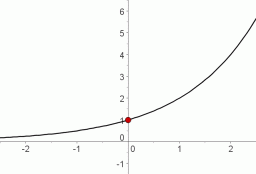
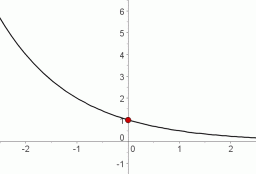
The Graph Passes Both the Vertical and Horizontal Line Tests
Vertical Line Test: Imagine a vertical line sweeping through a graph, checking each allowable $x$-value: if it never hits the graph at more than one point, then the graph is said to pass the vertical line test.
All functions pass the vertical line test, since the function property is that each input has exactly one output.
passes the vertical line test:
each $x$-value has only one $y$-value
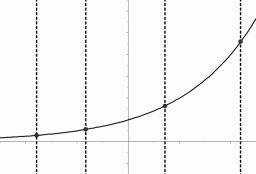
all functions
pass the vertical line test
fails the vertical line test:
there exists an $x$-value
that has more than one $y$-value
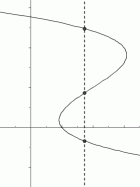
Horizontal Line Test: Imagine a horizontal line sweeping through a graph, checking each allowable $y$-value. If it never hits the graph at more than one point, then the graph is said to pass the horizontal line test. Some functions pass the horizontal line test, and some do not.
passes the horizontal line test:
each $y$-value has only one $x$-value
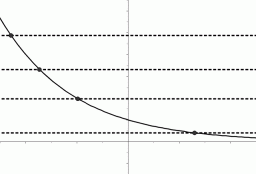
all exponential functions
pass the horizontal line test
fails the horizontal line test:
there exists a $y$-value
that has more than one $x$-value
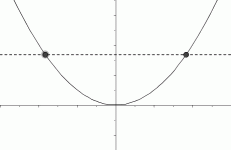
some functions
fail the horizontal line test
Thus, exponential functions have a wonderful property: each input has exactly one output (passes the vertical line test), and each output has exactly one input (passes the horizontal line test).
For such functions, you can think of the inputs/outputs as being connected with strings: pick up any input, and follow its ‘string’ to the unique corresponding output; pick up any output, and follow its ‘string’ to the unique corresponding input. That is, there is a one-to-one correspondence between the inputs and outputs. Functions with this property are called one-to-one functions.